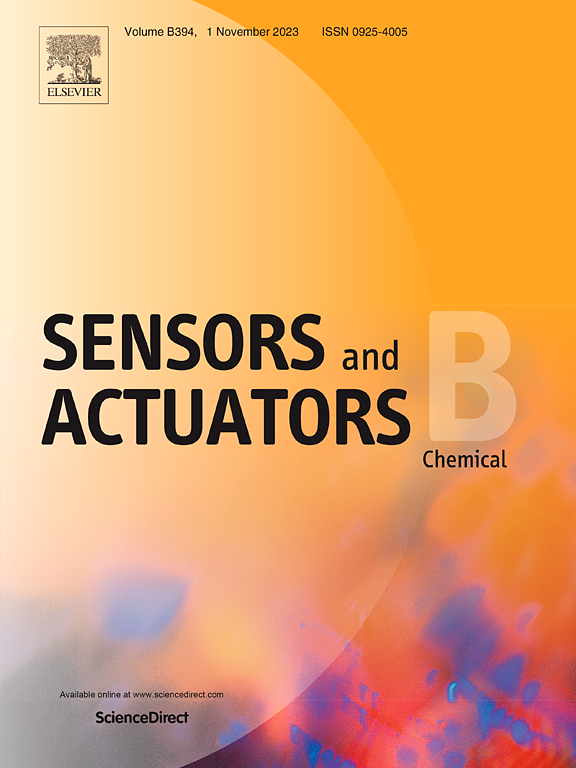基于SERS光谱和自适应局部加权可见图像结合并行自加权图神经网络的海水总磷浓度检测
IF 8
1区 化学
Q1 CHEMISTRY, ANALYTICAL
引用次数: 0
摘要
海水富营养化是全球海洋生态系统面临的重大挑战,准确测定总磷浓度对监测和缓解海水富营养化至关重要。然而,传统的检测方法往往存在成本高、操作复杂或检测灵敏度有限的问题。为了解决这些局限性,本研究提出了一种基于表面增强拉曼光谱(SERS)和图神经网络(GNN)的海水中总磷检测方法。首先,利用罗丹明6g (R6G)修饰的银纳米粒子(AgNPs)作为SERS活性底物,通过结合磷酸盐离子和钼酸铵的化学产物间接反演总磷浓度。然后,采用自适应局部加权可见性图(ALWVG)方法对SERS数据进行变换,增强局部和全局光谱特征;在此基础上,构建了基于谱化学特征划分的并行自加权图神经网络(PSWGNN),实现了TP浓度的高精度预测。实验结果表明,该方法在0 ~ 100µg/L浓度范围内具有良好的检测性能,R²为0.996,RMSE为1.652µg/L, MAE为1.138µg/L,加样回收率为97.20% ~ 102.77%。与传统方法相比,该方法灵敏度更高,适用性更广,对复杂的水生环境具有更好的适应性。研究结果表明,基于SERS和ALWVG-PSWGNN的TP检测系统为海洋富营养化监测提供了一种高效、低成本、准确、可扩展的解决方案。本文章由计算机程序翻译,如有差异,请以英文原文为准。
Detection of Total Phosphorus Concentration in Seawater Based on SERS Spectroscopy and Adaptive Locally Weighted Visible Image Combined with Parallel Self Weighted Graph Neural Network
Seawater eutrophication is a major global challenge for marine ecosystems, and accurate determination of total phosphorus (TP) concentration is crucial for monitoring and mitigating eutrophication. However, traditional detection methods often suffer from high costs, operational complexity, or limited detection sensitivity. To address these limitations, this study proposes a method for detecting TP in seawater based on surface-enhanced Raman spectroscopy (SERS) and graph neural networks (GNN). First, rhodamine 6 G (R6G)-modified silver nanoparticles (AgNPs) were utilized as the SERS active substrate to indirectly invert the total phosphorus concentration by combining the chemical products of phosphate ions and ammonium molybdate. Then, an Adaptive Local Weighted Visibility Graph (ALWVG) method was applied to transform SERS data, enhancing both local and global spectral features. Furthermore, a Parallel Self-Weighted Graph Neural Network (PSWGNN) was constructed, incorporating spectral chemical feature partitioning to achieve high-precision TP concentration prediction. Experimental results demonstrate that the proposed method achieves excellent detection performance in the 0–100 µg/L concentration range, with the R² of 0.996, the RMSE of 1.652 µg/L, the MAE of 1.138 µg/L, and the recoveries ranged from 97.20%-102.77%. Compared to traditional methods, this approach offers higher sensitivity, broader applicability, and better adaptation to complex aquatic environments. The findings suggest that the TP detection system based on SERS and ALWVG-PSWGNN provides an efficient, low-cost, accurate, and scalable solution for marine eutrophication monitoring.
求助全文
通过发布文献求助,成功后即可免费获取论文全文。
去求助
来源期刊

Sensors and Actuators B: Chemical
工程技术-电化学
CiteScore
14.60
自引率
11.90%
发文量
1776
审稿时长
3.2 months
期刊介绍:
Sensors & Actuators, B: Chemical is an international journal focused on the research and development of chemical transducers. It covers chemical sensors and biosensors, chemical actuators, and analytical microsystems. The journal is interdisciplinary, aiming to publish original works showcasing substantial advancements beyond the current state of the art in these fields, with practical applicability to solving meaningful analytical problems. Review articles are accepted by invitation from an Editor of the journal.
 求助内容:
求助内容: 应助结果提醒方式:
应助结果提醒方式:


